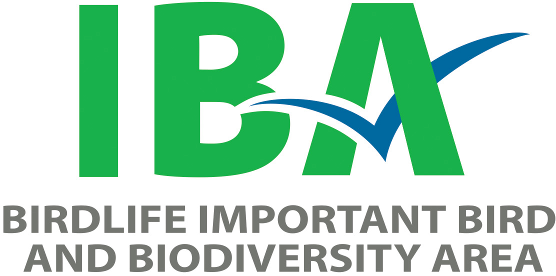Sept-Îles (QC162)
Sept-Îles, Québec
Site Description
The IBA is part of the city of Sept-Îles which is located on the Côte-Nord region, between the cities of Port Cartier and Moisie. This IBA encompasses a marine zone comprised of a bay and the Archipel des Sept Îles (seven islands archipelago), an intertidal zone, a continental zone, and an ombrotrophic bog known as the “plaine Checkley”. The seven islands form a natural barrier sheltering an almost circular bay which provides different habitats for all kinds of flora to thrive in. The IBA includes a variety of maritime habitats such as supralittoral flats, salt marshes, mud flats and eelgrass beds. The typical ecosystems of the Côte-Nord are well represented on the islands: boreal forest, beaches, rocky cliffs and barren summits. Some islands of the archipelago support large seabird colonies.
This IBA is an amalgamation of the former La Grosse Boule Island IBA and Corossol Island IBA. These two IBAs share common populations of birds but were established as separate IBAs because they were nominated independently; follow the above links to access the original site information.Birds
Sept-Îles IBA supports significant congregations of Great Black-backed Gull, Herring Gull, Double-crested Cormorant, and Black-legged Kittiwake. More than ten thousand seabirds use this site for breeding or during migration including; Common Murre, Razorbill, Black Guillemot, Surf and Black Scoter. Atlantic Puffins are also observed, but in low numbers (less than 10 individuals).
Hundreds of American Black Duck breed in the surrounding marshes and thousands of American Black Duck and Canada Goose use the site during fall migration. Great Blue Heron and Red-breasted Merganser are two other notable species frequently observed.
Shorebirds such as American Woodcock, Black-bellied Plover, Semipalmated Plover, Greater Yellowlegs, Semipalmated Sandpiper, Least Sandpiper, Dunlin, White-rumped Sandpiper and Wilson's Snipe, are found in great numbers during much of the year.
This site also supports several species-at-risk (listed by the Committee on the Status of Endangered Wildlife in Canada - COSEWIC) including Yellow Rail, Short-eared Owl, Barrow's Goldeneye, and Peregrine Falcon. Nelson's Sharp-tailed Sparrows are also regularly observed here.
In addition, some 20 raptor species have been recorded in the Sept-Îles IBA.
For a summary of bird records found within the original two IBAs that were amalgamated into this one site, please visit La Grosse Boule Island IBA and Corossol Island IBA. More recent bird records for this site can be found in the Sept-Îles Conservation Plan (2007).Conservation Issues
Oil spills pose a real threat to the IBA, as demonstrated by the Cliffs Natural Resources incident of 2013. In this particular incident, 5000 liters of residual fuel oil were spilled in the waters of the bay due to a tank overflow. Clean-up of oiled birds and bird scaring operations were implemented to mitigate bird mortality. However, nearly one hundred birds died according to the official data. Increase in shipping traffic in the Gulf of St. Lawrence leads to a higher risk of recurrence of similar incidents. Moreover, residential development, port/commercial/industrial development, and shoreline erosion caused by wave action has led to loss of natural wildlife habitats. This region is also very popular with recreational boaters and vacationers during summer. As such, birds are subject to increased disturbances which may adversely influence their breeding success and longer-term sustainability in this region. The IBA is included in the Priority Intervention Zone of the Côte-Nord du Golfe. Several zones within the IBA have been identified as Aquatic Birds Concentration Areas by the provincial government. In addition, Île du Corossol has been designated a Migratory Bird Sanctuary by the federal government.
IBA Criteria Habitats Land Uses Potential or Ongoing Threats Conservation Status

